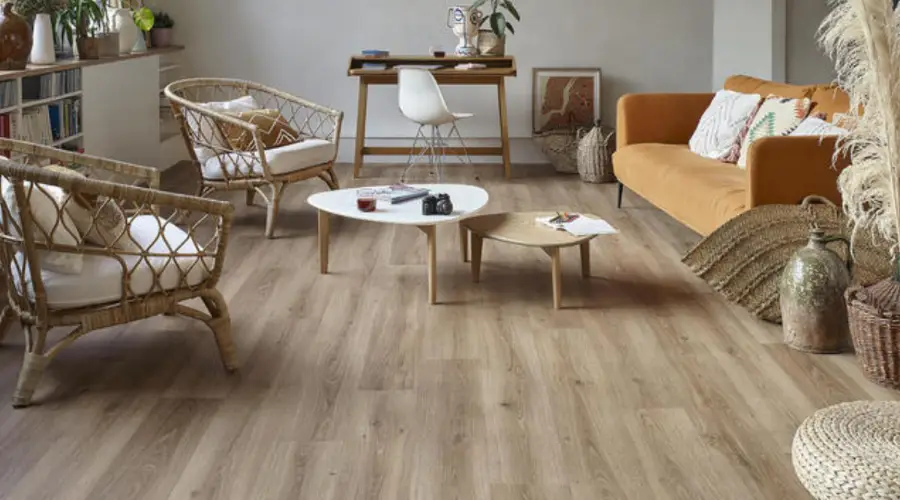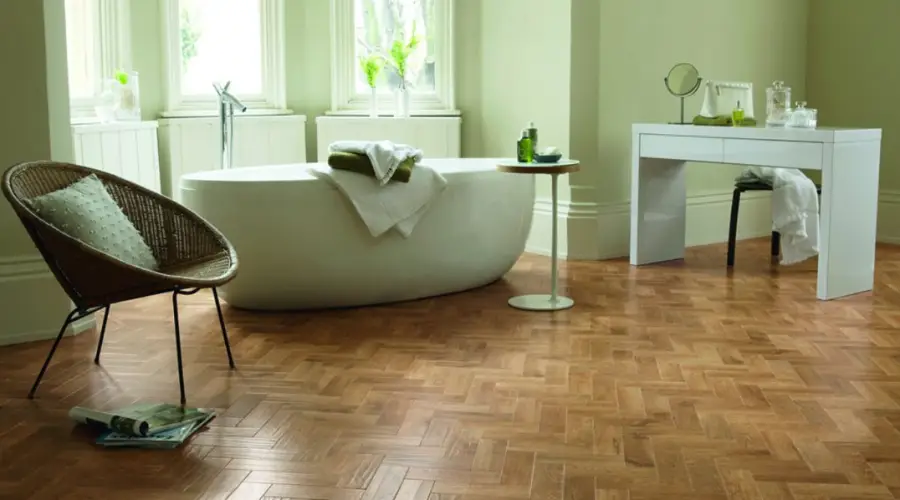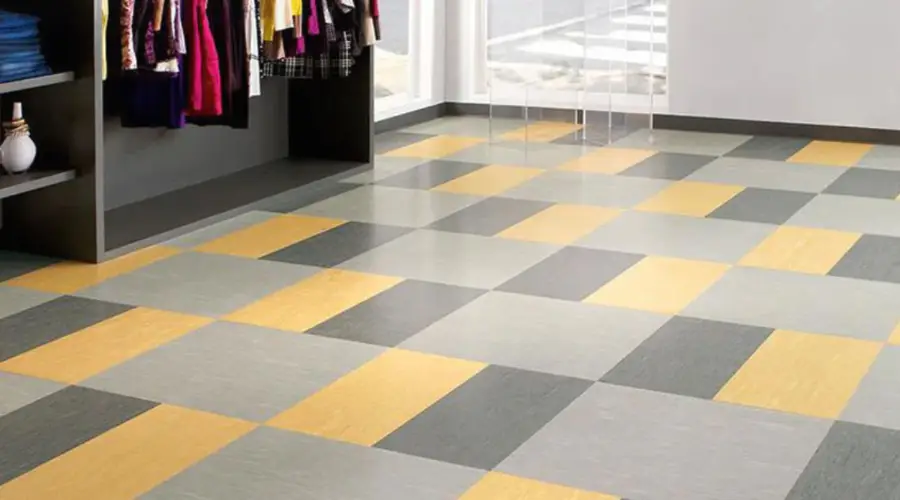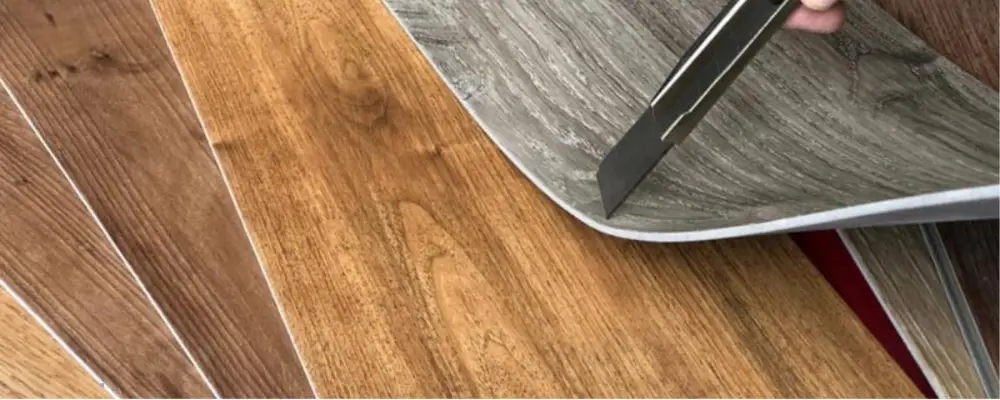Both the designers and architects are familiar with the term “resilient flooring.” It can be an ideal choice for both residential and commercial building works. If you don’t have any idea about this topic and want to learn something, then you are at the right place. This article covers what resilient flooring is, its types, benefits, and installation process. Learning the process can assist you in making informed decisions when designing a construction project.
What is Resilient Flooring?
Resilient flooring is a non-textile flooring that is available in various materials. However, it is not made from textiles, wood, concrete, ceramic, or stone. It can be any floor covering material, providing comfortable underfoot. The point to be highlighted is that it can retain its original shape even after being stretched, pulled, compressed, or bent. The best example of resilient flooring is vinyl flooring.
Types of Resilient Flooring
Resilient flooring is broadly classified into several types. Here are the lists of those:
Vinyl

Vinyl flooring has become the most commonly used type for both commercial and residential settings. It comes in two different forms, such as:
Luxury Vinyl Tile (LVT):

LVT includes multiple layers that are made from different materials. It can be maintained easily with mild cleaners and acrylic floor finish.
Vinyl Composition Tile (VCT):

VCT flooring is extremely durable and water resistant, which makes it suitable for high-traffic areas and bathrooms.
Rubber Flooring
Rubber flooring is a durable, water-resistant, and comfortable option, often used in commercial settings. It can be an excellent choice for playrooms and gyms and is easy to clean and maintain. It comes in interlocking tiles, sheets, or square tiles.
Cork Flooring
Cork is a natural, eco-friendly, and insulative flooring option. It is primarily valued for its comfort and softness and can help to reduce noise inside. This flooring can be more expensive than other available options.
Linoleum
Linoleum is made from natural materials like cork dust, wood flour, and linseed oil. It is natural, water-resistant, reliable, and easy to clean. It come in a variety of patterns and colours, making them suitable for individual flooring needs.
Carpet Tiles
Carpet tiles, also known as square carpets or modular carpets, can be a practical flooring option and be easily interlocked to create a larger floor covering.
Benefits of Resilient Flooring
Resilient flooring has been widely used due to its significant benefits. The most valuable points are its durability and toughness, though there are some more to mention. Here are those:
Soundproofing: Resilient flooring has excellent soundproofing properties, resulting in reduced foot traffic and a quieter environment overall. It can be particularly suitable for a hallways and bedrooms.
Cost-Effectiveness: It is a cost-effective option since it can withstand heavy wear and tear over time. Unlike other flooring types, it does not require frequent repair or maintenance.
Sustainable: Resilient flooring made from synthetic materials is quite durable and sustainable. Additionally, it can be recyclable, resulting in reduced waste.
Drawbacks of Resilient Flooring
While offering several benefits, it also have some potential drawbacks:
Temperature Sensitivity: Resilient flooring types are extremely temperature-sensitive, which can make you feel cold underfoot in colder climates. This is particularly identified with the vinyl backing and can be used with rugs or underfloor heating.
Limited Design Varieties: Undoubtedly, the market is filled with expanded design options; however, some resilient flooring types have limited designs, colours, and patterns compared to other flooring choices. It is better to understand the availability and choose the appropriate option.
Less Durability: Resilient flooring is generally durable; still, some types of options, like vinyl, are subject to dents, stains, and scratches. You may want to spend money on repairs or maintenance.
Applications of Resilient Flooring
Resilient flooring is a versatile and practical option for many spaces. However, it is significant to choose the right type that fits your specific needs.
Where Resilient Flooring Works Best:
High-Traffic Areas: Some specific types of resilient flooring contain exceptional durability, which makes them suitable for use in heavy foot traffic like commercial and residential spaces. It includes offices, restaurants, hospitals, airports, kitchens, entryways, mudrooms, and bathrooms.
Wet Areas: Due to its water-resistance properties, resilient flooring can be a perfect choice for
- Laundry rooms: floors and walls.
- Bathrooms: showers, tubs, and surrounding areas.
- Kitchens: Around sinks and countertops.
- Basements: Basements need additional care and attention to maintain their lifespan. When resilient flooring has excellent moisture resistance and the ability to withstand occasional flooding, this will be your primary choice.
Where Resilient Flooring is Not Ideal
High-Heel Traffic: Some types of resilient flooring are susceptible to damage when used in high-heel traffic areas. For instance, thinner vinyl is less durable, and may be often damaged due to heavy traffic and load.
Direct Sunlight: Prolonged exposure to direct sunlight can cause fast fading and damage in some cases. It will not be a choice if your selection of area is continuously exposed to harsh temperatures.
How to Choose Resilient Flooring
Resilient flooring comes in numerous patterns, textures, and colours. Before deciding on a type, it is important to compare all options and consider your requirements. Ask professionals whether the type of flooring is waterproof and can withstand heavy traffic while being used in challenging areas.
It is quite significant to understand its complete specifications and qualities before finalizing. Choosing the inappropriate flooring type can lead to costly damages and make you need to repair often
Installation and Maintenance
Installation:
Preparation: Subfloor preparation is the first step involved in the installation of resilient flooring. This process typically involves smoothing, leveling, and priming the surface.
Methods: Installation methods can vary depending on the type of resilient flooring you have chosen. However, the most common methods are loose-lay, click-lock, and glue-down.
Maintenance:
- Do regular vacuuming or sweeping to keep it free from dust and debris.
- A mild cleaner is advisable to mop the floor to improve its durability. Avoid using abrasive cleaners or harsh chemicals.
- You can use furniture pads to prevent dents or scratches on the floors.
- Regular cleaning and polishing of the surface helps maintain its appearance and improve its longevity.
Final Lines
It primarily matters what type of floor you have been choosing. From there, you can conclude the right cleaning machines, chemicals, and process of cleaning. To avoid any damage, ask for suggestions from your manufacturer and follow their advice accordingly. Understand the purpose of individual flooring and choose the one that perfectly suits your needs.
FAQs
The eco-friendliness varies based on the type of resilient floor you are choose. Types such as cork and linoleum are made from natural materials, which are highly sustainable. However, the other types may contain potentially harmful chemicals
Resilient flooring can provide enhanced performance, which is typically between 10 to 25 years. By providing proper care and maintenance, you can significantly improve its lifespan.
Yes, resilient flooring can be an exceptional choice for wet areas. It is highly durable and water-resistant, suitable to use in kitchens, laundry rooms, and bathrooms.
Yes, resilient flooring is a pet-friendly option. In general, it is easy to clean, maintain, and resistant to moisture and stains. Unlike other options, it is free from any harsh chemicals and prevents falls and slips.

